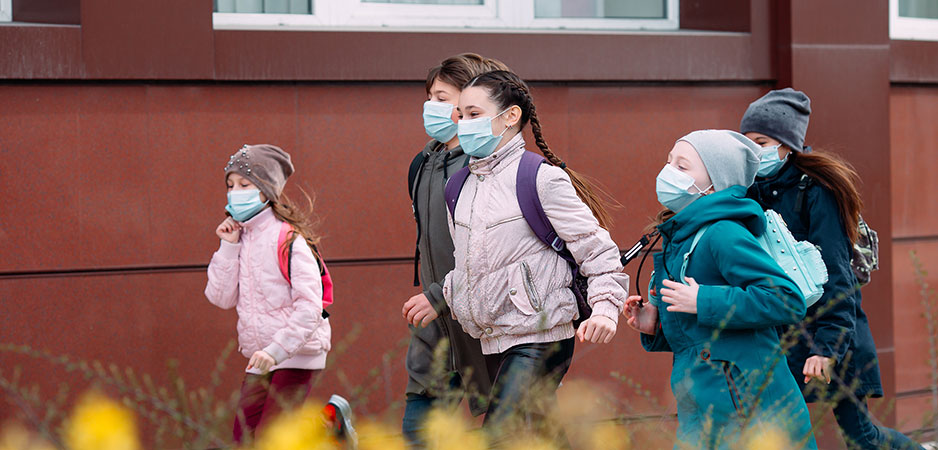Like most other human activities, education has been brutally affected by the COVID-19 pandemic. The traditional classroom, a place of safety in which the teacher reigned over students and represented a form of political order, suddenly came to be seen as a petri dish of disease threatening not just the learners and teaching staff but also the pupils’ families beyond the walls of the school.
Different nations and different regions of the world have sought to define policies intended to maintain, as best as they can, some continuity in teaching and learning. Many have called technology to the rescue, simply because it’s there. UNESCO estimates that the pandemic has had an impact on “over 60% of the world’s student population.” Television broadcasting, video conferencing, interactive multimedia and courses on the internet have played an important role, at least in convincing authorities that some kind of continuity exists.
Amazon’s Inhuman Sources of Human Resources
The results have proved disappointing. Technology hasn’t found a way of capturing and maintaining the interest of students who were formerly grouped together as captives in a classroom. Nations are now counting on a return to something resembling “normal” in the near future, when the pandemic has sufficiently subsided. But planning the return to normal following a disease whose progress nobody appears to understand represents another formidable challenge.
Wired magazine offers its readers a glimpse into the transformation of educational practices under the influence of COVID-19 in the US. To some, it may appear less as an adaptation to a novel threat than as an acceleration and aggravation of the normal, everyday institutional paranoia that has long dominated traditional education, fueled by an ideology borrowed from post-industrial social and organizational thinking.
Pundits have been warning us that most of what we now remember as “normal” in the world before COVID-19 will not be normal after it. What is true of social life in general will prove even more true in the realm of education. That begs the question of whether there will come a time that we can label “post-COVID-19.” Some experts are predicting that the novel coronavirus — which causes the COVID-19 disease — will be present, undermining the habits and reflexes of our sacred consumer society, for as many as three years or even longer.
The author of the Wired article, Will Knight, explains today’s ambience in the world of education. “Across the world, teachers, administrators, and parents are wrestling with how to welcome pupils back into normally bustling classrooms, dining rooms, and dorms, while the threat of the coronavirus remains ever-present,” he writes.
Here is today’s 3D definition:
Bustling:
Interacting spontaneously, a state of behavior deemed by people with a management outlook as chaotic and unproductive and by those with a holistic sense of systemic organization as a vital source of energy and constructive exchange
Contextual note
The article focuses not on the technology of teaching and learning, but on the tracking of contact and interaction between students. One superintendent cited in the article confesses: “We are very much interested in the automated tracking of students.” He cites his noble motive. He feels the technology will “help the school determine whether social distancing is being observed and help quickly identify students who may have been exposed if someone tests positive for the coronavirus.”
But the technology will do much more. It is a further step in automated policing of everyday behavior. Ever since Plato and Aristotle, schools were places where learning took place through dialogue that prospered best when it was free, open and productive. Plato offered us the model of the Socratic dialogue. His contemporaries called Aristotle “the peripatetic” because his teaching took place as he walked around the grounds with his students in open conversation. Now, a director of technology at a school in Pennsylvania claims that talking isn’t enough since “we need to identify some way to be able to automate the contact tracing process other than just, you know, talking to teachers.”
It’s true that starting in the industrial age, talking as a tool of education became an object of suspicion. Teachers did the talking and spent more time strictly policing students’ talking than encouraging it. Schooling in general has become focused not on exploratory dialogue, but on the delivery of an idealized “common core” (i.e., what authorities want students to know and remember) followed by testing students on their capacity to absorb it.
One superintendent, Brian Betze, expresses his reservations about the tracking systems and their goals: “Middle school kids, high school kids, they want to talk with their friends. They look forward to class, physical education, lunch.” Bureaucrats and politicians resist even thinking about the fact that learning is a social activity. As soon as the learners realize that their education focuses only on tracking and testing (and medicating for ADHD), they begin to understand that it’s a form of indoctrination.
The truth that educators and politicians refuse to admit or even consider is that learning isn’t confined to what happens in the classroom. Most learning takes place around and outside the classroom, in the social space that extends outward from both the school and the family home, the space that defines a community.
Some of that learning now takes place online, simply because online is increasingly part of everyone’s reality. Proponents of online learning often make a mistake similar to that of traditionalists who limit their focus to classroom behavior. They imagine online learning can constitute a coherent and self-sufficient world.
Both physical classrooms and “online learning spaces” should be recognized as artificial environments that define a space dedicated to “authorized learning.” It is a space dominated by “teaching acts” rather than learning processes. Teaching acts provide the material on which learners can be tested. But, in the process we call intellectual growth, what students learn and how they perceive what they have effectively learned is for the most part structured elsewhere and simply cannot be tested except through each learner’s experience of life and society.
Historical note
The real lesson of the Wired article turns around this observation concerning what may become a historical trend: “A small but growing surveillance industry has sprung up around Covid already, with firms pitching everything from temperature-tracking infrared cameras and contact tracing apps to wireless beacons and smart cameras to help enforce social distancing at work.”
For generations, people dissatisfied with the inefficacy of the reigning educational systems and programs have proposed “reforms.” Sometimes, they focused on the presentation of content and even publishing policies. At other times, they focused on teaching methodologies or adapting to trendy new theories of learning. Often, they would address issues of organization and tackle concepts of authority and discipline. The recent tendency has been to consider how education prepares youngsters for their future vocations rather than expand their cultural horizons. That focuses everyone’s attention on the needs of the industrial and commercial marketplace. The education of responsible, creative citizens is often left in the background.
The coronavirus pandemic has introduced a level of trauma that has supplanted all these other considerations. All decisions, all facets of organization must first answer the need for physical security to limit damage to the health of learners and teachers.
In the United States, two separate threats have arisen in recent years. The most recurrent one has been gun violence in the classroom. This has spawned “creative” ideas about militarizing education. The coronavirus has offered a far more frightening threat: invisible contamination. And it plays out in two directions: the fear of being contaminated and the potential for contaminating others.
In the land of economic opportunity and gated communities, the purveyors of security systems and technologies that isolate individuals to guarantee their safety have a wide-open market to exploit in the next few years. Perhaps when we start becoming blasé again about the novel coronavirus and other epidemics that will inevitably follow, we may have the time to think through what education should be about in a world we hope can at least maintain the veneer of civilization.
*[In the age of Oscar Wilde and Mark Twain, another American wit, the journalist Ambrose Bierce, produced a series of satirical definitions of commonly used terms, throwing light on their hidden meanings in real discourse. Bierce eventually collected and published them as a book, The Devil’s Dictionary, in 1911. We have shamelessly appropriated his title in the interest of continuing his wholesome pedagogical effort to enlighten generations of readers of the news. Click here to read more of The Daily Devil’s Dictionary.]
The views expressed in this article are the author’s own and do not necessarily reflect Fair Observer’s editorial policy.
Support Fair Observer
We rely on your support for our independence, diversity and quality.
For more than 10 years, Fair Observer has been free, fair and independent. No billionaire owns us, no advertisers control us. We are a reader-supported nonprofit. Unlike many other publications, we keep our content free for readers regardless of where they live or whether they can afford to pay. We have no paywalls and no ads.
In the post-truth era of fake news, echo chambers and filter bubbles, we publish a plurality of perspectives from around the world. Anyone can publish with us, but everyone goes through a rigorous editorial process. So, you get fact-checked, well-reasoned content instead of noise.
We publish 2,500+ voices from 90+ countries. We also conduct education and training programs
on subjects ranging from digital media and journalism to writing and critical thinking. This
doesn’t come cheap. Servers, editors, trainers and web developers cost
money.
Please consider supporting us on a regular basis as a recurring donor or a
sustaining member.
Will you support FO’s journalism?
We rely on your support for our independence, diversity and quality.






